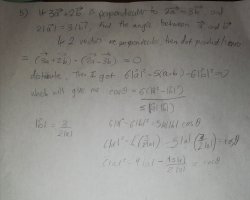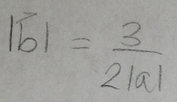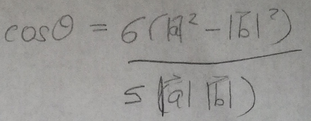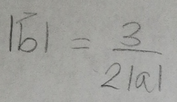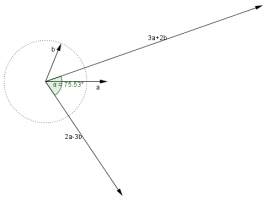ecilalikespie
New member
- Joined
- Apr 15, 2022
- Messages
- 1
Hello, so I have a problem. I am struggling with this vectors problem. I wasn't sure where to post this but since it's from my calc class I decided to post it here. I am not sure what to do after what I have already done, and would like to know if what I have already done is correct. Thank you in advance for anyone who takes the time out of their day to help me, it is very much appreciated.